
As sargassum continues to grow in the open ocean, so does its popularity amongst humans. Once it began washing up on beaches in mass quantities, humans began to open their eyes to a seaweed species that has been floating, unassumingly, in the open ocean for centuries.
Sargassum, first and foremost, is an algae. A seaweed. There are more than 250 different species of sargassum, but only two of those live their entire lives floating in the ocean. It is these two, sargassum natans and sargassum fluitans, that are multiplying by the tons, washing up along coastlines, and causing all the ruckus.
Biological enigma
Prior to 2011, sargassum was not a well-known species of seaweed. It had its place in some culinary dishes and traditional medicines, but many people would never be able to identify it from a photo.
The Sargasso Sea, a region of the Atlantic Ocean bounded by four gyres and has no land, only floating masses of sargassum, has been known to scientists since Christopher Columbus documented it. However, little had ever been studied on a species that reproduces asexually yet on a seasonal cycle and lives its entire life floating in the open ocean, attached to nothing. A biological enigma.
Everything changed in 2011. The Great Atlantic Sargassum Belt (GASB) emerged seemingly out of nowhere, extending from West Africa to the Caribbean Sea and Gulf of Mexico.
Not bounded by gyres, the sargassum from the GASB is at the mercy of the wild winds, currents, and tides of the ocean. It did not take long for the ocean to push and pull the sargassum onto shores.
Using data collected between 2000-2015 by satellites already in orbit, a team led by Mengqiu Wang and Chuanmin Hu from the University of South Florida confirmed the GASB was not there prior to 2011, and has continued to grow since.
Bu hikaye DIVER Canada dergisinin Summer 2023 sayısından alınmıştır.
Start your 7-day Magzter GOLD free trial to access thousands of curated premium stories, and 9,000+ magazines and newspapers.
Already a subscriber ? Giriş Yap
Bu hikaye DIVER Canada dergisinin Summer 2023 sayısından alınmıştır.
Start your 7-day Magzter GOLD free trial to access thousands of curated premium stories, and 9,000+ magazines and newspapers.
Already a subscriber? Giriş Yap
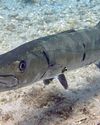
Fun With a Smart Phone
Compact digital cameras are fast disappearing in favour of smartphones. How about underwater photography?
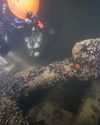
An Old Encounter
The mighty St. Lawrence River, in its Quebec section, has swallowed hundreds of wrecks through the centuries, many of them still unvisited.

Al is Coming to Diving
You are about to enter another dimension—a scuba dimension not only of sight and sound, but of mind. A journey into a wondrous land of imagination. Next stop…no, not the Twilight Zone…but the AI Zone! Yes, Artificial Intelligence is coming to scuba diving.

Preventing heat exhaustion
Beautiful sunny days have a way of coaxing us outside for adventuring, exploring, and diving. But it’s important to be mindful during your outdoor activities of the risks of heat-related illnesses— especially in the summer.
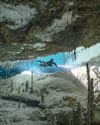
You Won't Impress Your Cave Instructor
I am so sorry for disappointing you!” My student apologized as he tossed his cave diving light into the gear crate and dropped his fins beside my truck.
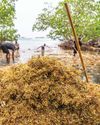
THE PERFECT STORM
WORDS AND PHOTOS BY NICOLE WEBSTER
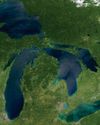
PROTECTING NAYAANO NIBIIMAANG GICHIGAMIIN
The Great Lakes Watershed

Phil Nuytten: DIVER
Industry luninaries remember diving legend Phil Nuytten, OC, OBC, DSc (hon), LLD (hon): magazine publisher, engineer, innovator, artist, businessman, eccentric, raconteur, magician, writer, husband, father... and-first and foremost-diver. (1941-2023)

Phil Nuytten - SIMON FRASER UNIVERSITY CONVOCATION ADDRESS
A final Soundings column from DIVER Publisher and Senior Editor Phil Nuytten, taken from his 1995 address to students in British Columbia

NEW DEEP CAVE DIVING RECORD SET IN CHINA
Renowned Chinese cave diver Han Ting surfaced after a 12-and-a-half-hour dive to 910.1 feet (77.4m) in Jiudun Cave, a new Asia deep cave diving record. The dive was a part of the Duan’s Juidun Cave Features (DJCF) project.